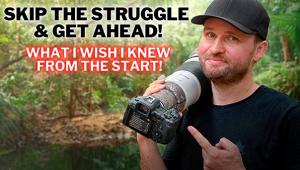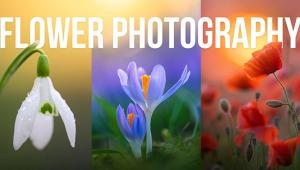Now is a GREAT Time for Minimalist Outdoor Photos: Here's How (VIDEO)

Minimalism is a powerful technique used by experienced landscape photographers to create order out of the chaos inherent to complex outdoor scenes in which a myriad of unrelated elements compete for attention. This simple-but-dramatic imagery is often rendered in high-contrast b&w but there plenty of room for vibrant color, as you'll see in the video below.
Instructor Micael Widell is a notable Swedish pro who specializes in macro photography, nature and landscape imagery, and capturing the bustling urban environment. We've featured his macro tutorials in the past, but this episode is devoted to 10 pro techniques that prove the old adage that sometimes less is more.
Widell kicks off the episode with a minimum requirement for simplified imagery: "In any minimalist photo you need to have negative space." This key element is often thought of a featureless area within the composition, a blank sky, or an area with a single tone that's totally devoid of detail. In fact, darkness itself can be used to creatively portray negative space when shooting at night.

Another of Widell's tricks is to look for solid surfaces that can greatly simply a composition. These could be the plain wall of a structure, an area where two complimentary tones collide, a bridge against the sky, or the surface of a pond, lake, or sea. As he says, "these single-color surfaces are a type of negative space."
Widell's third tip is what he refers to as "lock down" and this is what he means: Stand somewhere with a high vantage point, like a bridge or atop a hill, and point your camera downwards. "Then the ground will be the surface and you'll be able to make nice, minimalist compositions."
Conversely, try shooting upward toward the sky from a low camera position. At this point we've barely scratched the surface of the methods Widell demonstrates for keeping a scene clean. He describes other unique camera angles that work well, how to use silhouettes to advantage, and making the most of certain types of weather.

You'll also learn why shallow depth of field can be your friend, and how zooming in tight will eliminate distracting elements from a scene. Once you're done watching head over to Widell's instructional YouTube channel where you'll pick up more unique tips for capturing the great outdoors.
And don't miss the earlier tutorial we featured with another popular outdoor photography instructor who demonstrates how to capture wondrous wide-angle photographs by following seven guidelines for skillful compositions.
- Log in or register to post comments















































